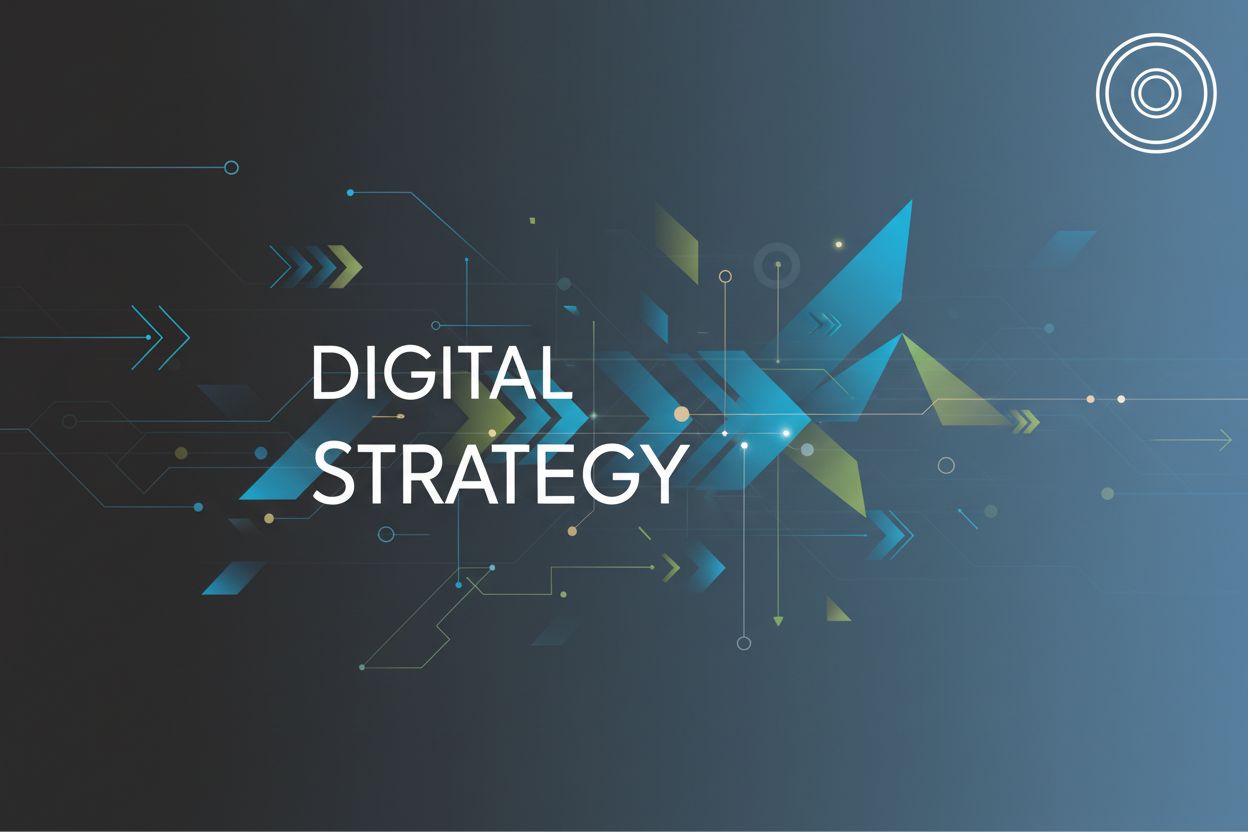How to Develop a Solid Digital Marketing Strategy
TL;DR
Understanding the Foundation of a Solid Digital Marketing Strategy
Alright, so you're diving into digital marketing strategy, huh? It's kinda like planning a road trip – you could just start driving, but you'll probably end up lost and wasting gas. Trust me, I've been there.
Think of a solid digital marketing strategy as the foundation of a house. Without it, you're building on sand, and everything's gonna crumble. A good strategy provides:
- Direction: It's your compass, showing you where you need to go and how to get there. For a healthcare provider, this might mean increasing patient engagement through targeted content.
- Effective Budget Allocation: No more throwing money at tactics that don't work. A strategy helps you focus on the channels that give you the best bang for your buck. A 2025 report by O8 highlights tactics for boosting your digital marketing strategy to increase sales.
- Measurable Results: You can't improve what you can't measure. A strategy sets you up to track your progress and make data-driven decisions.
- Competitive Edge: The digital world changes fast, so a strategy helps you adapt and stay ahead. For example, retail businesses are using ai to personalize shopping experiences, a trend that demands a strategic approach to implementation. (AI in Retail: Leveraging Use Cases and Strategies for ...)
To illustrate how these benefits translate into action, let's consider a hypothetical fintech startup. Instead of just posting random stuff on social media, a strategic approach involves:
- Defining your Ideal Customer Profile: Are you targeting millennials, Gen Z, or seasoned investors?
- Choosing the Right Channels: LinkedIn might be better than TikTok for reaching your target audience.
- Creating Valuable Content: Educational blog posts, webinars, and infographics that address their needs.
- Measuring and Optimizing: Tracking website traffic, lead generation, and conversion rates to refine your approach.
It's widely reported that nearly 4 billion people are connected online, making a marketing plan essential for increased efficiency.
So, that's the foundation – direction, smart spending, measurability, and competitiveness. Next up, we'll dig into exactly what a digital marketing strategy is all about. Spoilers: It's more than just posting on Instagram.
Key Components of a Winning Digital Marketing Strategy
Okay, so you're trying to figure out the real meat of a digital marketing strategy? It's more than just slapping together a few ads and hoping for the best, honestly. Think of it as building a finely-tuned engine, each part working together.
Audience Understanding
First off, understanding your audience is totally paramount. You can't, like, market effectively if you don't know who you're even talking to. It's like shouting into the void – you'll hear an echo, but no real conversation.
- Develop detailed buyer personas – fictional representations of your ideal customers – based on actual research and data, not just, y'know, hunches. Dive deep into who actually buys from you, or who you want to buy from you.
- Really consider their demographics, interests, pain points, and, most importantly, their online behavior. Where do they even spend their time online? What are they searching for? Are they even on social media, or do they prefer, say, niche forums?
- Use tools like Google Analytics, social media insights, and customer surveys to gather data and really refine your understanding of your audience. Don't just guess – actually know what makes them tick.
Goal Setting
Your goals should be specific, measurable, achievable, relevant, and time-bound (SMART). It's a classic for a reason, folks. This framework ensures your objectives are clear and actionable, preventing vague aspirations from leading to wasted effort.
- Instead of just saying "increase website traffic," aim for something like "increase organic website traffic by 20% in the next quarter." Numbers, baby! You gotta have numbers.
- Definitely align your marketing goals with your overall business objectives. Are you looking to increase sales, generate leads, or maybe just build brand awareness? Your marketing is there to serve those bigger goals.
- Make sure you define key performance indicators (kpis) to track your progress and measure your success. Examples include website traffic, conversion rates, and social media engagement. Without these, you're just flying blind.
Channel Selection
Not all digital channels are created equal, seriously. You need to select the ones that are most relevant to your target audience, or you're wasting time and money.
- Consider factors like your audience's demographics, their online behavior, and, critically, the type of content they actually prefer. Do they like videos? Long-form articles? Snappy memes?
- Are they active on social media? Do they rely on search engines to find information? Do they even prefer email or video content? These are all important questions to ask.
- Don't spread yourself too thin. Focus on just a few key channels where you can actually make a real impact. It's better to do a few things really well than a whole bunch of things poorly.
A lot of folks overthink this, but it doesn't have to be rocket science. Just go where your customers are, and speak their language.
So, you've got your audience, your goals, and your channels. Next, we'll dive into creating some seriously compelling content, and what that actually means. It's about more than just slapping words on a page, that's for sure.
Crafting Compelling Content: What Will Resonate with Your Audience?
Alright, so you wanna make some seriously compelling content, huh? Well, it ain't just about throwin' words at a wall and seein' what sticks. It's about connectin' with your audience on a level that makes 'em think, "Hey, this is for me."
Think of content pillars as the legs of a table – they gotta be strong and steady to hold everything else up. These are your core themes, aligned with both your brand and your audience's deepest interests. For a financial services company, maybe it’s "Retirement Planning for Millennials" or "Investing in a Volatile Market." To identify your own, consider your brand's unique value proposition and the problems your audience is trying to solve.
Content ain't just king; it's the whole royal family when it's relevant and engaging. Gotta make sure it speaks to your audience and adds somethin' to their day, y'know?
Mix it up with different content formats. Nobody wants to read the same ol' blog post every time. Videos, infographics, podcasts, eBooks – they all bring somethin' different to the table.
Don't let good content die – repurpose it! Turn that blog post into a video script, or that webinar into a series of social media snippets. You can also transform a long-form article into an infographic, or extract key quotes for social media posts. Get the most bang for your buck!
Ever notice how some brands just feel different? That's the power of storytelling and a consistent brand voice. People connect with stories, not just products.
Storytelling is where the magic happens. It's not just about what you sell, but why you sell it. It's about showing your brand's personality and building that emotional connection.
Brand voice? That's your brand's personality shining through in everythin' you say and do. It should be consistent across all channels.
Be real, be you. People can sniff out BS from a mile away. Authenticity is key, especially in today's world.
Don't forget the visuals! A picture's worth a thousand words, right? Images and videos can pack a serious emotional punch and get your message across way better than just plain text.
So, next up, we're gonna dive into how to actually measure all this stuff. It's not just about creatin' great content; it's about knowin' what's workin' and what's not. Gotta keep those kpis in check!
Implementing and Optimizing Your Digital Marketing Strategy
Alright, so you've poured your heart and soul into crafting a digital marketing strategy. Now what? It's time to roll up your sleeves and actually do something with it. Think of this section as the "now what" part of the whole process, turning planning into action – and then tweaking it to perfection. These tactics should work together, not in silos, to create a unified customer experience.
SEO is basically about making your website super attractive to search engines like Google. When your site ranks higher in search results, more people click on it, right? It's like having the best storefront on the busiest street.
- Start with keyword research. What words are people actually typing into Google when they're looking for what you offer? There are tools for this, don't worry.
- Then, optimize your website itself. Make sure it's easy to navigate, loads quickly, and has clear, concise content. Meta descriptions? Don't forget 'em.
- Backlinks are also key. Get other reputable websites to link to yours – it's like getting a thumbs-up from the cool kids.
- For example, if you're a local bakery, focus on keywords like "best bakery near me" and get listed on local directories.
Social media is where the people are, so you need to be there too. It's not just about posting pretty pictures; it's about actually connecting and building a community.
- First, choose the right platforms. If you're targeting Gen Z, TikTok might be your jam. If you're going after professionals, LinkedIn is probably a better bet.
- Then, create engaging content that's tailored to each platform. What works on Instagram won't necessarily work on X.
- Don't be afraid to use social media advertising to reach a wider audience. It can be surprisingly effective.
- A retail store might run a contest on Instagram, asking people to share photos of themselves using their products.
Email marketing might seem old-school, but it's still one of the most direct ways to reach your audience. It's like having a private conversation with each of your customers.
- Build an email list by offering something valuable in exchange for email addresses. A free ebook, a discount, a webinar – whatever works for your audience.
- Segment your list so you can send targeted messages to specific groups of people. Someone who just signed up for your newsletter shouldn't get the same emails as someone who's been a customer for years.
- Personalize your emails to make them more relevant and engaging. Use their name, mention their past purchases, whatever you can do to make them feel like you're talking directly to them.
- A SaaS company might send a series of emails onboarding new users, showing them how to use different features of the software.
Sometimes, you need to give your marketing a little boost. That's where paid advertising comes in. It's like putting a megaphone to your message.
- Choose the right platforms. Google Ads, social media ads, whatever makes sense for your target audience.
- Create compelling ad copy and visuals. Grab attention and make people want to click.
- Target your ads carefully. Don't waste money showing ads to people who will never be interested in your product.
- A local restaurant might run ads on Google Maps, targeting people who are searching for "restaurants near me."
Don't be afraid to experiment. Try different things, see what works, and adjust your strategy accordingly.
This diagram illustrates the ongoing cycle of digital marketing: Plan (strategy development), Execute (implementing tactics), Measure (tracking KPIs), Analyze (interpreting data), and Optimize (refining the strategy based on insights). It's a continuous loop of improvement.
Implementing and optimizing your digital marketing strategy is an ongoing process, not a one-time event. It requires constant monitoring, analysis, and adjustment. But if you do it right, the rewards can be huge. So, get out there and start making some magic happen!





